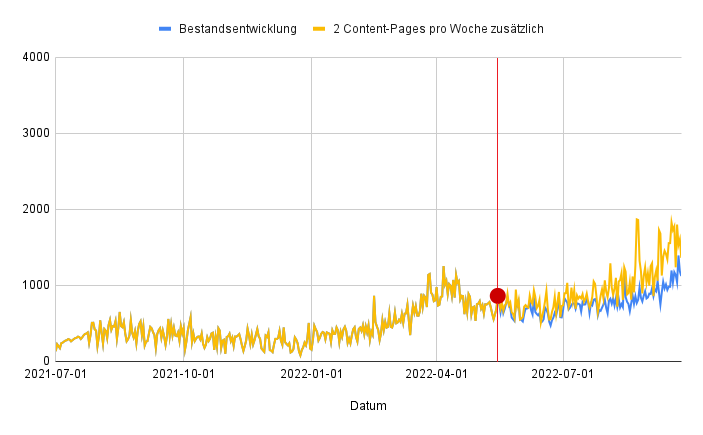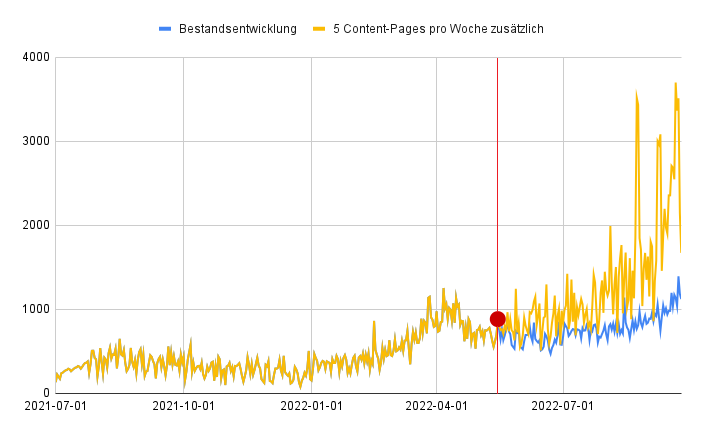Simulation for resources in marketing teams
With online marketing forecasts, we can simulate developments in the future. We can simulate budget allocations in ads campaigns, calculate continuous improvements in the conversion rate with Google Optimize or extrapolate organic traffic from new content. Allocating an advertising budget with a cost-per-conversion key is quite plausible – however, planning for the effects in content marketing requires a lot of manual effort.
Use case: content marketing
The organic user traffic from Google Search is the flagship acquisition channel for most companies: it’s often the oldest, largest, and most importantly, most enduring channel. Building and expanding organic reach with content marketing is always associated with a lot of work over a long period of time. This requires a lot of content that has to be strategically planned and created. The question is: How long does it take for certain goals to be achieved as a result? What needs to be done to reach a new bar?
Online marketing forecasts can be used, for example, to simulate KPI target achievement: If a company has 3,000 organic website clicks per month from Google search, but larger competitors receive more orders and register over 10,000 organic hits – what effort and time frame would then have to be raised in order to achieve such a target?
Metric 1: Average monthly clicks generated from newly launched content pages over time
When a company registers 3,000 organic website clicks per month from the Google search, but larger competitors receive more orders and book over 10,000 organic hits – what effort and time would have to be spent to reach such a target?
Metric 2: Average text creation time of the content page in hours
How high are the resources in the content creation area at the moment? What would the resources be like for newly hired employees? These questions are important for scenario planning: For example, 5 new employees could be hired with a quota of 20 hours per week for content creation. If we assume one content page per week under this workload, we would have a key with which we can carry out our calculations.
Metric 3: (optional) Average time to create a content page revision

Right of the red dividing line: Forecast values of organic website clicks per day for inventory development and the adjusted resources in content creation. In this example, the development could be seen with 2 newly launched content pages per week, which in our non-representative calculation would correspond to 2 newly hired employees with a workload of 20 hours per week in content marketing.
If the content is later effectively revised with SEO tools, the resulting effects can also be taken into account.

Right of the red dividing line: Forecast values for the stock development of organic website clicks per day and the adjusted resources in content creation. In this example, the development could be seen with 5 newly launched content pages per week, which in our non-representative calculation would correspond to 5 newly hired employees with a workload of 20 hours per week in content marketing.

Slava Wagner
Marketing & Leadgenerierung
SEA, Paid Media, Conversion-Rate-Optimierung, Markt- und Trendanalysen im Raum Berlin-Brandenburg.
Telefon: +49 176 588 744 04
E-Mail: info@slavawagner.de

